Video here
Antes de Lisboa descobrir o Mundo, o Convento das Bernardas acolhia um dos restaurantes mais amados de Lisboa. Por isso a reabertura do espaço com o nome de ‘No Convento’ era esperado com grande expectativa pelos moradores de sempre da nossa cidade. É que nesta morada respirava ‘A Travessa’, um restaurante que fazia as maravilhas dos lisboetas. Quem não se lembra dos ‘Figados de Aves com uvas’ e do carisma muito específico de António Moita? Era um restaurante diferente numa Lisboa ainda escondida, onde uma cozinha de inspiração belga, se fundia com um receituário português, em pratos com grande qualidade. E aqui sou suspeita, sendo um clássico preferido, meu e dos meus Pais, regressar a esta morada sem eles vivos, iria ser sempre um marco forte.
Por isso antes de falar desta nova morada de Lisboa, regressemos por favor ao passado. Em 1978, Viviane Durieu, Virginie Laffou e Pedro Martins tiveram uma ideia: abrir uma morada com bom pão, bom queijo e bom vinho, o que foi o embrião para um dos restaurantes mais carismáticos de Lisboa. E se tudo começou nos anos setenta, foi em 2003 que de um restaurante mais pequeno perto, se instalaram no Convento das Bernardas.
Eu que sigo atenta sempre com grande carinho a história de Lisboa, fiz questão de selecionar o ‘No Convento’ para a lista das minhas escolhas na cidade. E se é um marco histórico pelas tantas alianças politicas e negócios que por lá passaram, este não é um convento qualquer. É um Convento de Cister e até me arrepio a escrever isto, porque foi esta ordem que me deu o nome e rege a história da minha família de alfarrabistas e antiquários, por isso o meu nervoso miudinho em revisitar a morada com outro conceito e assinatura. Como jóia escondida nas ruas da Madragoa, queria muito que o brilho se mantivesse, não apenas pela iconografia que carrega, mas por me ser um convento muito querido por razões, de ligação histórica familiar e homenagem aos monges cistercienses.
Mas comecemos pelos factos mais antigos. Fundado em 1653 e reconstruído após o terramoto de 1755, o convento, também conhecido como Mosteiro de Nossa Senhora da Nazaré, foi ocupado por recoletas religiosas da Ordem de Cister até à abolição das ordens em meados do século XIX. Desde então, seguiram-se inúmeras ocupações, desde escolas até uma sala de cinema e de concertos, sede da banda filarmónica e habitação, o que acontece ainda hoje. Com um papel fundamental no panorama das artes e da educação no bairro da Madragoa é um selo importante da identidade de Lisboa.
As paredes centenárias do restaurante ‘No Convento’ contam com trezentos anos de história e de evolução, e a ideia foi sempre manter a morada, o mais próximo possível do que era no século XVII. Palavras de Sacha Gielbaum, um dos novos sócios do restaurante, que juntamente com Emil Stefkov, ambos fundadores do Reia Collective, trouxeram a Lisboa projectos internacionais a Lisboa, mas tudo em bom com muita qualidade como é o ‘Casa Reia’ na Caparica.
Emil Stefkov, nascido na Macedónia, é um empresário com mais de vinte anos de experiência, ao longo dos quais fundou várias empresas de restauração e hotelaria, viagens e imobiliário. Fundador do The Group NYC, nos EUA, o seu coletivo desenvolveu restaurantes tão reconhecidos como La Boucherie, Olio e Più e Washoku Rooms.
Sacha Gielbaum, nascido em Paris, mas com uma visão global, sempre sentiu uma ligação forte com tudo o que envolvesse pessoas e lugares. O seu percurso no mundo da hospitalidade começou no Rio de Janeiro, onde fundou o The Rio Arts Club e Goitaca Stays, combinando envolvimento da comunidade com alojamento inovador, que acabariam por ser o ponto de partida para projetos futuros, cada um com uma filosofia própria de integração da cultura na hospitalidade.
O resultado está à vista. Juntamente com o gosto sempre depurado, e por isso muito bonito, da designer de interiores Juliana Cavalcanti, o espaço está muito bem conseguido. Escreve uma fã de ambientes penumbra dignos do século século XVIII. Pessoalmente adorei a atmosfera do ‘No Convento’ e não lhe mudava rigorosamente nada. Dos veludos, à luz das velas, ao papel de parede da casa de banho, tudo magnificamente bem orquestrado. E sendo um conceito novo, com novos empreendedores por trás e que não sendo portugueses têm ainda a elegância de escolher um nome em português. No ambiente, na penumbra, nas velas, na simplicidade, na escolha dos materiais, dei logo a minha nota vinte. Adorei o que fizeram do espaço.
Na cozinha contamos com a assinatura do chef executivo Pedro Henrique Lima, responsável criativo da carta. Juntamente com o chef residente João de Oliveira e o apoio dos chefs internacionalmente reconhecidos Alexis Gielbaum e Maxime Kien, com o apoio dos chefs franceses Alexis Gielbaum (Head Chef do Café des Alpes Gryon) e Maxime Kien (Executive Chef do The Group NYC), que se juntaram ao projeto como chefs consultores, apenas numa primeira fase, para criação da carta. Esta eclética equipa faz acontecer aquele que me parece ser um dos melhores projectos dos últimos tempos da nova Lisboa.
A carta ilumina o espaço com foco na diversidade do terroir local e regional, com uma seleção de carne, peixe, marisco e vegetais, em que cada prato reflete despretenciosamente, a abundância de produtos portugueses da terra e do mar em combinação com vários produtos de origem internacional. Há claramente uma busca pelos melhores fornecedores que colocam a qualidade e a sustentabilidade como farol. E se já estava encantada com o ambiente, pelas provas, este é um restaurante onde vou querer regressar muitas vezes.
Na minha experiência, partilho convosco as ‘Ostras do Rio Sado, com chalotas, vinagrete de cidra de maçã vermelha e maçã verde’ e as ‘Vieiras St. Jacques seladas com molho de coral e açafrão e pérolas de lima, servidas na concha’. Acompanhei com dois fulgurantes cocktails da casa, altamente recomendáveis,, assinados por Maurício Leal, o bartender executivo. A carta de vinhos foi desenvolvida por Maurício Leal e o sommelier Luís Amaral, responsável pela seleção de vinhos do antigo ‘A Travessa’ durante oito anos, e que agora inicia um novo capítulo no restaurante ‘No Convento’. Neste legado, trouxe consigo algumas garrafas únicas que se mantiveram guardadas por muitos anos, para verdadeiros enófilos: referências portuguesas e internacionais, a carta de vinhos inclui vinhos tintos, brancos, laranja e espumantes de produtores reconhecidos para uma harmonização perfeita com as criações culinárias.
Nas entradas, entre várias opções, ainda olhei para o ‘Foie Gras “mi-cuit” com peras cozidas em vinho tinto, legumes da época em picle, manteiga de pera e brioche tostado’, mas ficará para uma próxima oportunidade.
Nos principais, as minhas escolhas caíram pelo ‘Tornedó Rossini (lombo de vitela assado) com foie gras de pato, brioche, espargos verdes e demi-glace trufada’ e ‘Chuléton dos Açores com Flor de Sal de Vinho Tinto’. Os acompanhamentos são feitos à parte e escolhi ‘Espargos grelhados, com trufa e azeite do Esporão Trufado no Convento’ e um magnífico ‘Puré de batata com manteiga de cabra’ que me levou a sabores monásticos.
Para uma próxima ida. fiquei de olho no ‘Bacalhau Confit a um Filet D’Agneau Rôti (cordeiro) servido com chutney de beringela e tâmara, batatas fondant e jus de cordeiro infundido com cominhos’ e a ‘Coxa de Pato confitada com creme de cenoura defumado’.
Nas sobremesas, já seria difícil surpreenderem-me, mas delirei com a ‘Tarte Tatin de Maçã Fuji, molho de caramelo salgado, crumble de sablé e lavanda’, e gostei bastante da aveludada ‘Mousse de chocolate amargo com laranja e casca de laranja cristalizada’, texturas de praliné de pinhões. Para os amantes ‘Crème Brûlée, esperem a companhia da baunilha com Bourbon Beans com frutos vermelhos da época e merengue de lúcia-lima’ da casa.
O compasso é lento, por isso não estranhe o movimento do serviço, é que o espírito monástico faz questão de levar a vida com calma e isso vende também o espírito holístico de uma experiência de um convento.
Em tempos a fama trouxe a alta e erudita boémia de Lisboa como músicos, artistas e intelectuais hoje vivemos uma nova Lisboa. E se por vezes é difícil integrar no que a nossa cidade se tornou, há projectos que se destacam, pela sua grande qualidade, com foco na simplicidade e despretensão, tão características da ordem de Cister.
O ‘No Convento’ que numa fórmula internacional reinventou uma morada importante para os amantes de Lisboa, conseguiu respeitar o ADN de simplicidade dos monges brancos, num restaurante obrigatório, sem ferir a memória dos lisboetas. E isso é notável e altamente recomendável nos dias que correm. E o melhor pode ainda estar por vir, quando escolhermos o claustro, para jantar em fulgurantes noites estivais num dos restaurantes mais marcantes de Lisboa.
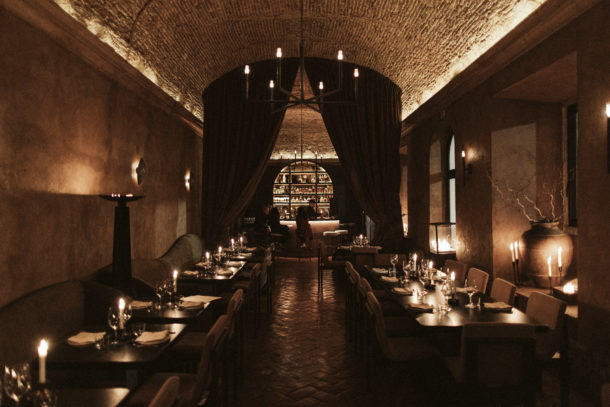
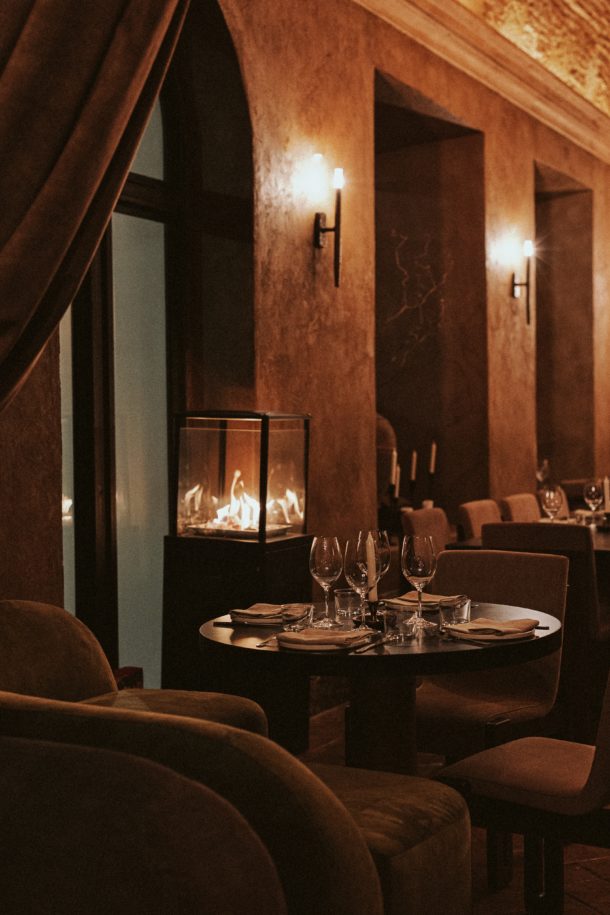
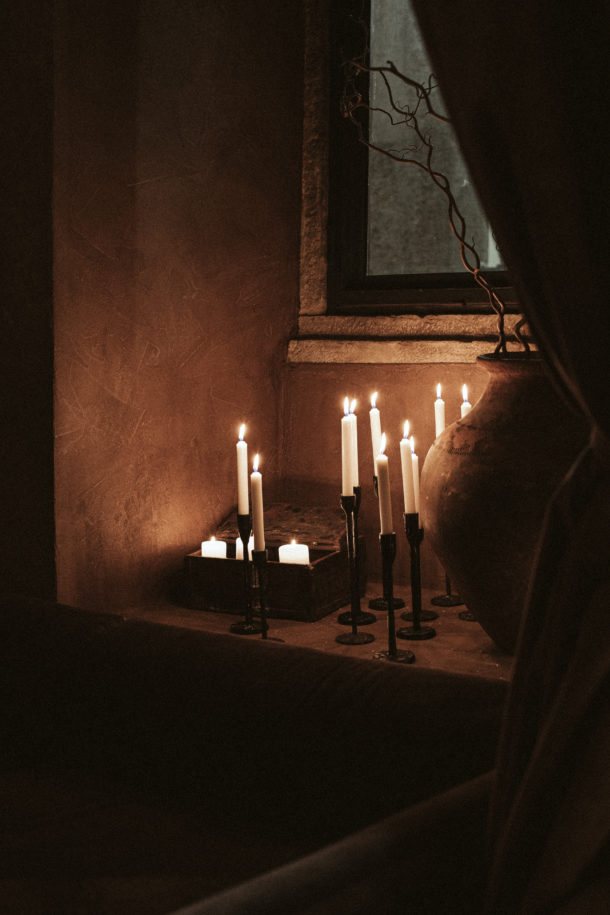


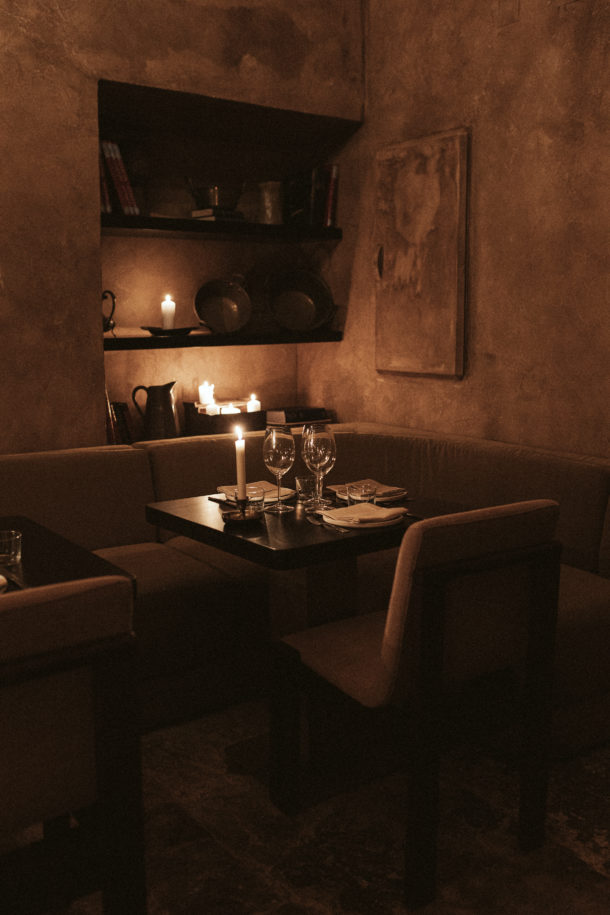

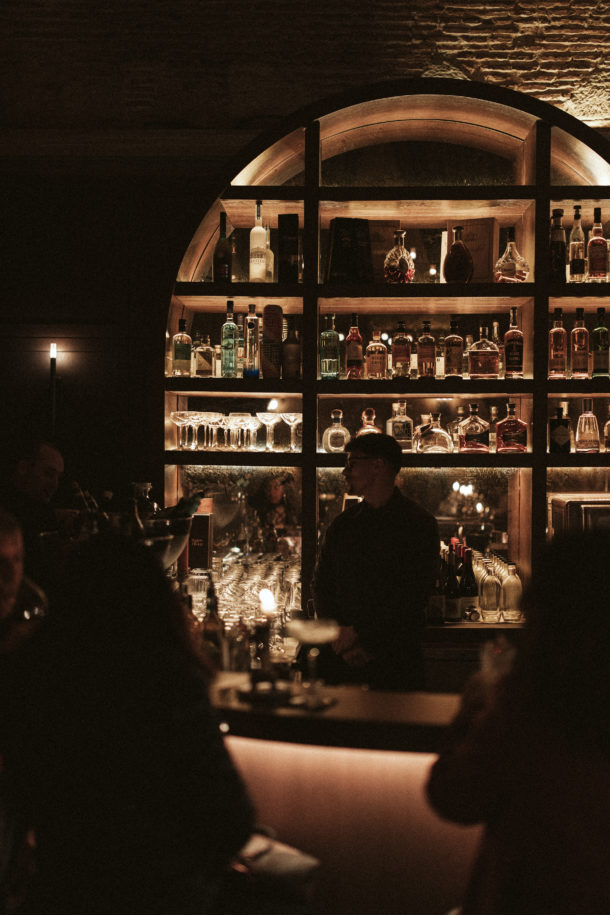





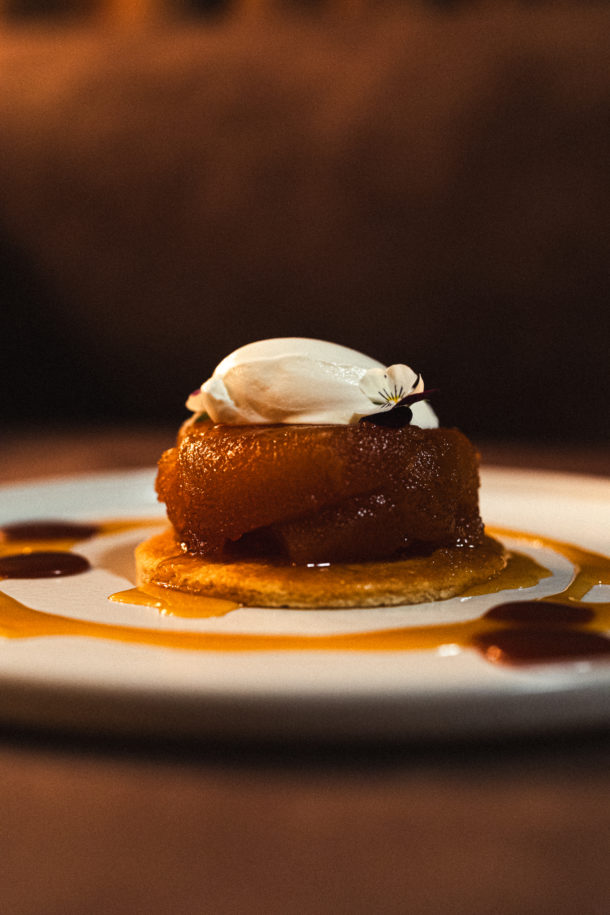
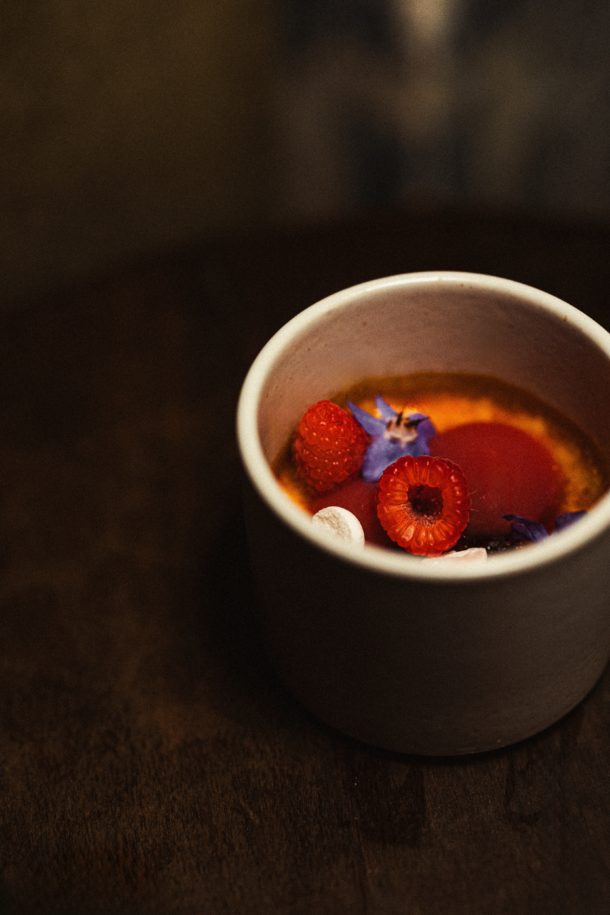
© Sancha.Co Creative Lab & No Convento
O que adorei
O ambiente e o respeito 360 à simplicidade dos monges de Cister
A melhorar
Talvez o serviço mais atento, mas fui no início e os projectos quando abrem estão sempre numa fase de adaptação.
A reservar
Qualquer mesa é cénica, mas sou suspeita adorei este projecto.
***
Before Lisbon discovered the world, the Convento das Bernardas was home to one of Lisbon’s best-loved restaurants. That’s why the reopening of the space under the name ‘O Convento’ was eagerly awaited by our city’s lifelong residents. This is where ‘A Travessa’ breathed, a restaurant that wowed the locals. Who doesn’t remember the ‘Figados de Aves com uvas’ and the very specific charisma of António Moita? It was a different restaurant in a Lisbon that was still hidden away, where Belgian-inspired cuisine merged with Portuguese dishes of the highest quality. I’m a bit of a suspect here because it’s always been one of my and my parents’ favourites and returning to this address without them alive would always be a major milestone.
So before we talk about this new address in Lisbon, let’s please go back in time. In 1978, Viviane Durieu, Virginie Laffou and Pedro Martins had an idea: to open an address with good bread, good cheese and good wine, which was the embryo for one of Lisbon’s most charismatic restaurants. And if it all started in the seventies, it was in 2003 that they moved from a smaller restaurant nearby to the Convento das Bernardas.
As someone who always follows Lisbon’s history with great affection, I made a point of selecting ‘O Convento’ as one of my picks in the city. And if it’s a historic landmark for the many political alliances and business deals that have passed through it, this is no ordinary convent. It’s a Cistercian Convent and I get goose bumps writing this, because it was this order that gave me my name and governs the history of my family of booksellers and antique dealers, which is why I’m so nervous about revisiting the address with a different concept and ‘signature’. As a hidden gem in the streets of Madragoa, I really wanted it to retain its lustre, not only because of the iconography it carries, but also because it is a convent very dear to me, for historical family connection and homage to the Cistercian monks.
But let’s start with the oldest facts. Founded in 1653 and rebuilt after the 1755 earthquake, the convent, also known as the Monastery of Our Lady of Nazareth, was occupied by religious Recollects of the Cistercian Order until the orders were abolished in the mid-19th century. Since then, numerous occupations have followed, from schools to a cinema and concert hall, the headquarters of the philharmonic band and housing, which is still the case today. With a fundamental role in the arts and education scene, the Madragoa neighbourhood is an important stamp on Lisbon’s identity.
The century-old walls of the ‘No Convento’ restaurant boast three hundred years of history and evolution, and the idea has always been to keep the address as close as possible to what it was in the 17th century. These are the words of Sacha Gielbaum, one of the restaurant’s new partners, who together with Emil Stefkov, both founders of the Reia Collective, have brought international projects to Lisbon, but all in good quality, as is ‘Casa Reia’ in Caparica.
Macedonian-born Emil Stefkov is an entrepreneur with over twenty years’ experience, during which time he has founded several restaurant and hotel, travel and property companies. Founder of The Group NYC in the USA, his collective has developed such renowned restaurants as La Boucherie, Olio e Più and Washoku Rooms.
Sacha Gielbaum, born in Paris but with a global outlook, has always felt a strong connection to everything that involves people and places. His journey into the world of hospitality began in Rio de Janeiro, where he founded The Rio Arts Club and Goitaca Stays, combining community involvement with innovative accommodation, which would end up being the starting point for future projects, each with its own philosophy of integrating culture into hospitality.
The result is clear to see. Together with the always refined, and therefore very beautiful, taste of interior designer Juliana Cavalcanti, the space is very well realised. She writes that she is a fan of 18th-century shadowy atmospheres. I personally loved the atmosphere of ‘No Convento’ and wouldn’t change a thing about it. From the velvets to the candlelight to the wallpaper in the bathroom, everything is beautifully orchestrated. And since it’s a new concept, with new entrepreneurs behind it and who are not Portuguese, they still have the elegance to choose a name in Portuguese. The atmosphere, the dim light, the candles, the simplicity, the choice of materials, I immediately gave it my top score. I love what they’ve done with the space.
In the kitchen we have the signature of executive chef Pedro Henrique Lima, who is creatively responsible for the menu. Together with resident chef João de Oliveira and the support of internationally recognised chefs Alexis Gielbaum and Maxime Kien, with the support of French chefs Alexis Gielbaum (Head Chef at Café des Alpes Gryon) and Maxime Kien (Executive Chef at The Group NYC), who joined the project as consultant chefs,only in the first phase, to create the menu. This eclectic team is making what seems to me to be one of the best projects of recent times in the new Lisbon happen.
The menu illuminates the space with a focus on the diversity of the local and regional terroir, with a selection of meat, fish, seafood and vegetables, in which each dish unpretentiously reflects the abundance of Portuguese products from the land and sea in combination with various products of international origin. There is clearly a search for the best suppliers who place quality and sustainability as their beacon. And if I was already enchanted by the atmosphere, by the tastings, this is a restaurant I’ll want to return to many times.
In my experience, I share with you the ‘Oysters from the River Sado, with shallots, red apple cider vinaigrette and green apple’ and the ‘St Jacques scallops sealed with coral and saffron sauce and lime pearls, served in the shell’. I accompanied them with two highly recommended house cocktails by Maurício Leal, the executive bartender. The wine list was developed by Maurício Leal and sommelier Luís Amaral, who was responsible for the wine selection at the former ‘A Travessa’ for eight years, and who is now starting a new chapter at the ‘No Convento’ restaurant. In this legacy, he has brought with him some unique bottles that have been kept for many years, for true oenophiles: Portuguese and international references, the wine list includes red, white, orange and sparkling wines from recognised producers for a perfect pairing with the culinary creations.
As for the starters, among the various options, I still had my eye on the ‘Foie Gras “mi-cuit” with pears cooked in red wine, pickled seasonal vegetables, pear butter and toasted brioche’, but that will be for another time.
My main choices were ‘Tornedó Rossini (roast veal loin) with duck foie gras, brioche, green asparagus and truffled demi-glace’ and ‘Chuléton dos Açores with red wine fleur de sel’. Side dishes are made separately and I chose ‘Grilled asparagus, with truffle and Esporão Truffled olive oil in the Convent’ and a magnificent ‘Mashed potatoes with goat’s butter’ which took me to monastic flavours.
For my next visit, I’ve got my attention on the ‘Cod Confit to a Filet D’Agneau Rôti (lamb) served with aubergine and date chutney, fondant potatoes and cumin-infused lamb jus’ and the ‘Confit Duck Thigh with smoked carrot cream’.
When it came to desserts, it would have been difficult to surprise me, but I was delighted with the ‘Fuji Apple Tarte Tatin, salted caramel sauce, sablé and lavender crumble’, and I really enjoyed the velvety ‘Dark chocolate mousse with orange and candied orange peel’, textured with pine nut praline. For lovers of ‘Crème Brûlée, expect the company of the house’s vanilla with Bourbon Beans with seasonal red fruits and lime meringue.
The pace is slow, so don’t be surprised by the movement of the service, it’s just that the monastic spirit makes a point of taking life easy and this also sells the holistic spirit of a convent experience.
Fame once brought Lisbon’s high and erudite bohemia together with musicians, artists and intellectuals, and today we live in a new Lisbon. And if it’s sometimes difficult to integrate what our city has become, there are projects that stand out for their high quality, with a focus on simplicity and unpretentiousness, so characteristic of the Cistercian order.
‘No Convento’, which has reinvented an important address for Lisbon lovers in an international formula, has managed to respect the Cistercian monks’ DNA of simplicity in a must-visit restaurant without harming the memory of Lisbon. And that is remarkable and highly recommended these days. And the best may be yet to come, when we choose the cloister to dine on sparkling summer evenings in one of Lisbon’s most striking restaurants.
What I loved
The atmosphere and respect 360 for the simplicity of the Cistercian monks
To be improved
Perhaps the most attentive service, but I went at the beginning and when projects open they are always in a phase of soft opening adaptation.
To book
Any table is scenic, but I’m a little suspicious – I loved this project.
Follow Sancha.Co’s Instagram
To invest in Portugal with heritage preservation: CURATED Investments
